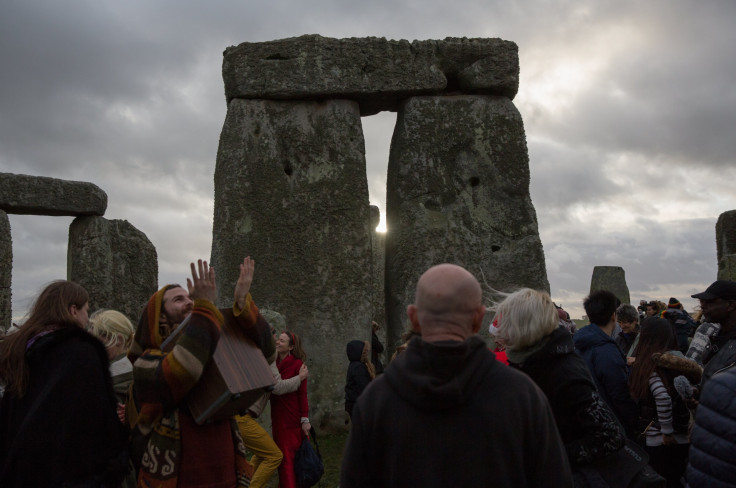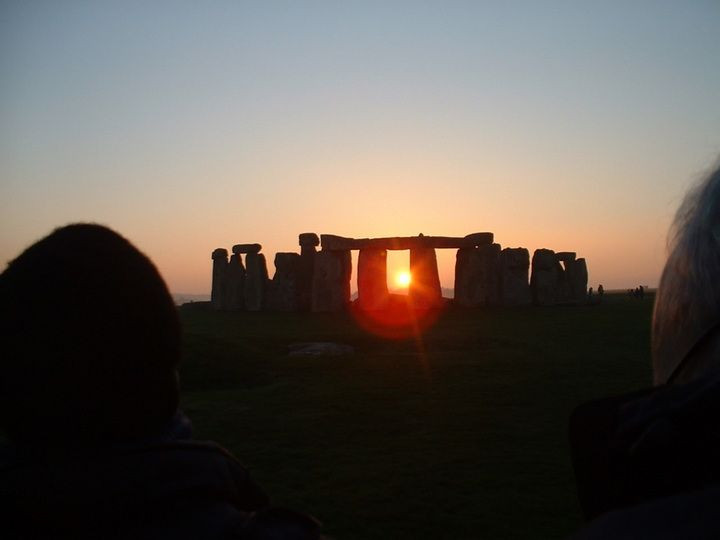Winter Solstice 2017: Things To Know About Pagan Yule Celebrations And Rituals

Pagan's Yule celebration marks the winter solstice in the Northern Hemisphere on Dec. 21 or 22 depending on the exact location of the Earth. The holiday celebrates the rebirth of the sun and the beginning of winter and is known to be the one of the oldest winter celebrations.
The winter solstice is the longest night and shortest day of the year. This year, the day with the fewest hours of sunlight will fall on Thursday. The winter solstice occurs the moment the North Pole is tilted furthest away from the sun – 23.5 degrees, to be precise. This moment has been marked by mankind for centuries.
Pagans
Thousands of years ago, the winter solstice was seen as a rebirth, marking the start of lighter days as people at the time believed the seasons and the sun were of crucial importance as they were dependent on the harvesting of crops for survival. Many ancient civilizations, including the Egyptians, Greeks and Romans, made offerings to gods as a celebration of the sun’s return.
Egyptians celebrated the return of Ra, god of the sun, on a daily basis. Ancient Greeks held a similar festival called Lenaea. The Roman Empire held Saturnalia celebrations. Scandinavia's Norsemen called the holiday "Yule."
As part of rituals for the Yule festival, families would light Yule logs where they would eat until the log burned out — which could take up to 12 days. The ancient Germans offered sacrifices to the god Odin, while feasting and drinking ale.
Stonehenge
One of the most popular and well known celebrations of the solstice is at Stonehenge in England. The historical landmark is believed to have been constructed thousands of years ago by Celtic druids to line up with the exact position of the sunset on the winter solstice.

Christmas
Winter solstice celebrations continue to live on with Christmas and many traditions of Yule are linked with the Christian holiday. The very date Christmas is celebrated also has its roots in Pagan rituals. Since the Bible did not point to an exact date when Christ was born, Pope Julius I chose Dec. 25. It’s commonly believed that the church chose the date in an effort to replace the Roman Saturnalia with the Christian holiday.
"As the Christmas celebration moved west," Harry Yeide, a professor of religion at George Washington University told National Geographic. "The date that had traditionally been used to celebrate the winter solstice became sort of available for conversion to the observance of Christmas. In the Western church, the December date became the date for Christmas."
Christmas traditions including dinner feasts, gift-giving, and decorative wreaths can be traced back to winter solstice rituals.
Modern Festivities
For Wiccans and Druids, Yule is one of the eight solar holidays celebrated each year. Wiccans see Yule as a time to celebrate with friends and family by exchanging gifts and honoring the sun. Decorations usually focus more on red, green and white — colors that hark back to Druidic traditions.
Rituals during this time include meditating in darkness with lit candles, singing pagan carols and lighting Yule logs (either in indoor fireplaces or outdoor bonfires).
Druids typically celebrate the holiday at Stonehenge in England that receives thousands of visitors each year. Winter solstice celebrations also take place at other ancient sites such as Newgrange in Ireland and the Cerro del Gentil pyramid in Peru.
© Copyright IBTimes 2024. All rights reserved.





















